Media | Articles
GM fields a semi-secret autocross team for young engineers
Today’s twist on the old saw about racing improving the breed is that competition also benefits the breeders’ skill set. General Motors confirmed that theory five years ago when the company’s Performance Driving Team (PDT) got a green light. The reason you probably haven’t heard of it is that they spend their time racing instead of tooting horns.
The PDT’s aim is to provide fresh engineering recruits a tantalizing opportunity to indulge their driving passions. Instead of sending them forth on dicey road-racing excursions, Wayne McConnell, GM’s executive director of performance integration and head of the company’s Milford, Michigan, proving grounds, selected a safer path: the Sports Car Club of America’s Autocross field. There, the most serious crash scenario is a spin-out that topples a traffic cone or two.
McConnell, with GM for 37 years, brought no personal motorsports experience to the party but was quick to realize the potential benefits of an in-house team of driving enthusiasts when that idea was proposed by a couple of young engineers with barely a year of employment under their belts. “The team quickly became a powerful recruiting tool,” McConnell explains. “We haul interviewing engineers by the busload to the Milford Black Lake dynamic test facility for hot laps in one of the autocross cars. Those who join GM invariably confirm that this experience is what tipped the employment balance in our favor.”

Support for the Performance Driving Team idea started with two Camaros that couldn’t be sold to customers, along with a $50,000 budget to cover tire and replacement part expenses. As the project gained momentum, the annual budget grew to encompass travel and lodging expenses.
Aside from its safety benefits compared to road racing, the SCCA Autocross series offers countless competition classes, several of which have minimal rules, thereby enabling creative tuning strategies. The street tire classes require rubber with a 180-tread-wear rating. Minimum curb weights are defined but this competition is for all intents “run what you brung.”
Marketplace
Buy and sell classics with confidence
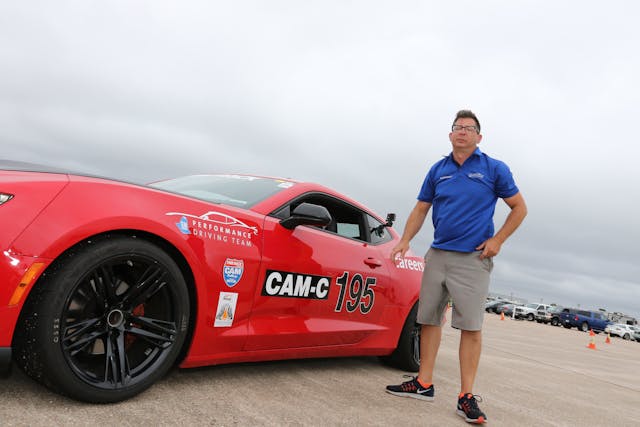
The two SS Camaros provided for the 2016 season were powered by 455-hp V-8s. Thirty team members began practicing every Saturday on a cone course laid out at the Milford Proving Grounds. At the end of the 2017 season, Shaun Bailey—who joined GM in 2012 with ample motorsports experience gained as Road & Track’s technical editor—won the CAM-C (Classic American Muscle, Contemporary) class championship with a Camaro SS 1LE equipped with Camaro ZLE 1LE suspension and an electronically controlled limited-slip differential upgraded via a team-designed calibration. His margin of victory over 52 competitors was half a second. By this point, the team had swelled to a couple hundred men and women.
Then, the team donned thinking caps. Realizing that handling invariably trumps horsepower in this venue, they “downgraded” their ride to a Camaro Turbo for 2018. Powered by a turbocharged 2.0-liter four-cylinder engine rated at 275 horsepower, their new Camaro cut curb weight by a significant 300 pounds and shifted the car’s balance decisively rearward. Tuning measures included further lightening to reach the CAM-C class’s 3300-pound minimum weight, revised intake and exhaust systems, and higher turbo boost. The team ultimately achieved an estimated 375 horsepower running on higher-octane fuel.
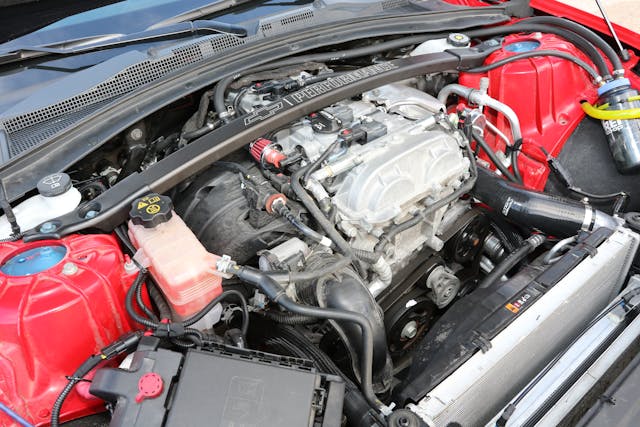
“One nagging issue was throttle response,” Bailey notes. “Fortunately we have several talented engineers on the team capable of producing special tuning calibrations.” The solution, created by Matt Busch and Dave Schmitt, was continuing to inject fuel into the combustion chamber after the throttle was closed to maintain the exhaust turbine’s spin and boost. The result was more torque available upon corner-exit tip-in than their V-8 racer had provided. The downside? The closed-throttle fuel injection was, in Bailey’s words, “mean to the turbo.” Several failures ensued but, luckily, none in the heat of battle.
Upgraded chassis components—wheels, shocks, suspension hardware—came from the Camaro ZL1 1LE. An electronically controlled limited-slip differential was developed (and added to the GM Performance catalog for dealer installation) but the team’s SCCA car kept its simpler mechanical differential because the eLSD posed an installation hassle.
Out of the box, the team scored a 1-2 finish with the win earned by Alexander Doss and Bailey taking second against 56 competitors. At the 2018 SCCA Solo Nationals held in Lincoln, Nebraska, the two swapped places. Competing in the rain, Bailey was top dog with a 1.235-second margin of victory.
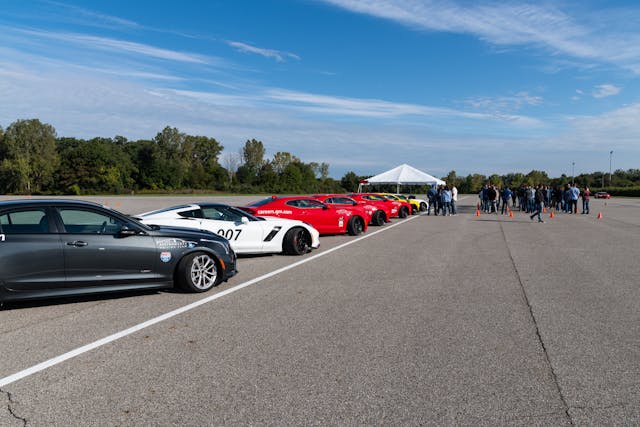
GM’s Performance Driving Team quickly grew to include 20 drivers and a variety of cars, an effort that earned nearly 100 trophies. During a typical weekend, at least fifty out of the 100-strong team enjoy their time converting gasoline to noise and tires to dust at either practice or an SCCA event. Bailey was too busy to participate much in 2019 but teammate Alex Doss did run a prepped Cadillac ATS-V successfully at the SCCA Nationals achieving his third third-place finish in so many years.
A side benefit is an expeditious path from handling advancements to GM production line changes. McConnell adds, “the Performance Driving Team has created numerous tuning packages we offer as aftermarket upgrades.” Another plus is young engineers reporting for work six days a week with smiles on their faces. The pandemic halted all 2020 activities, but the team is champing at the bit to return to competition as soon as possible.











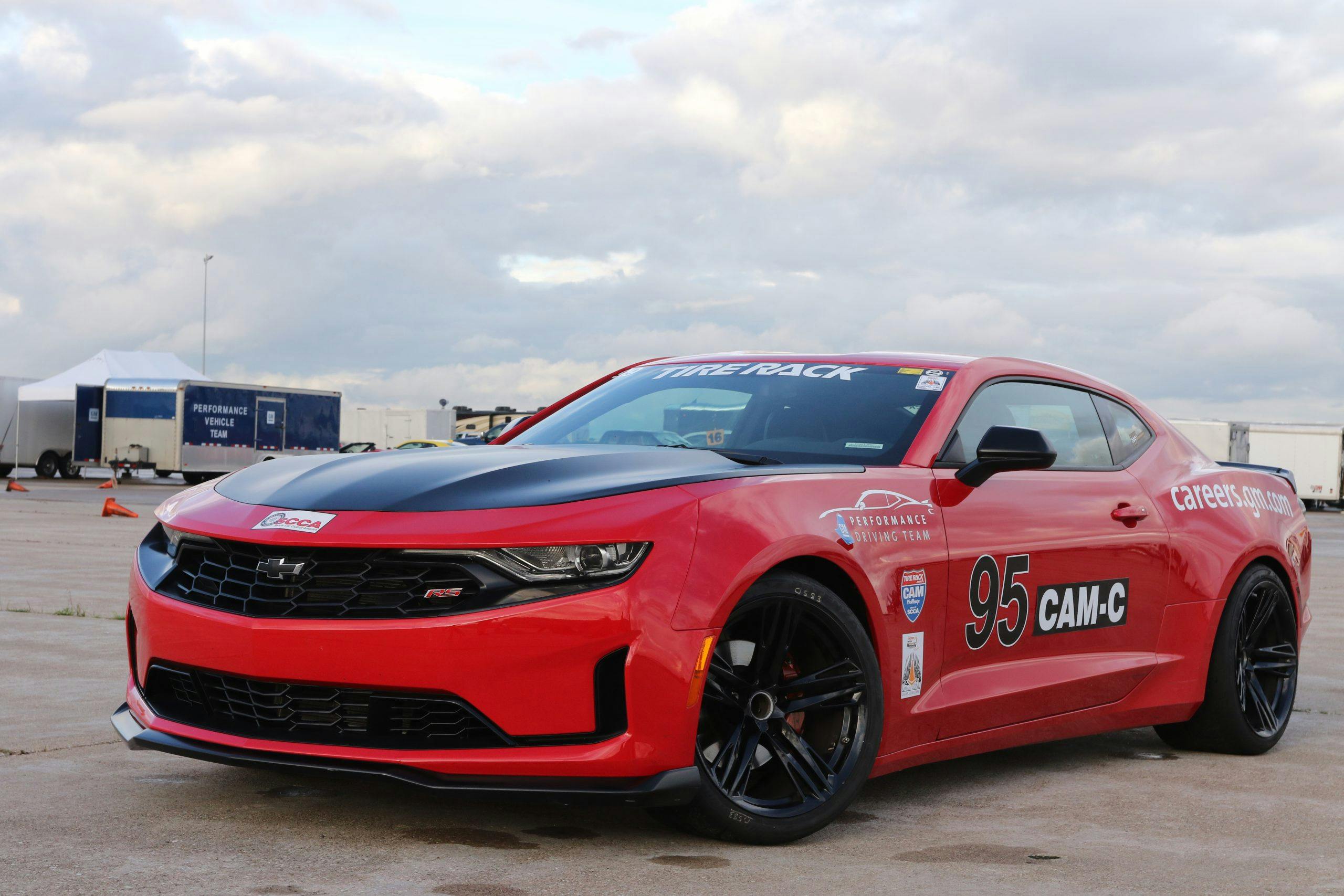

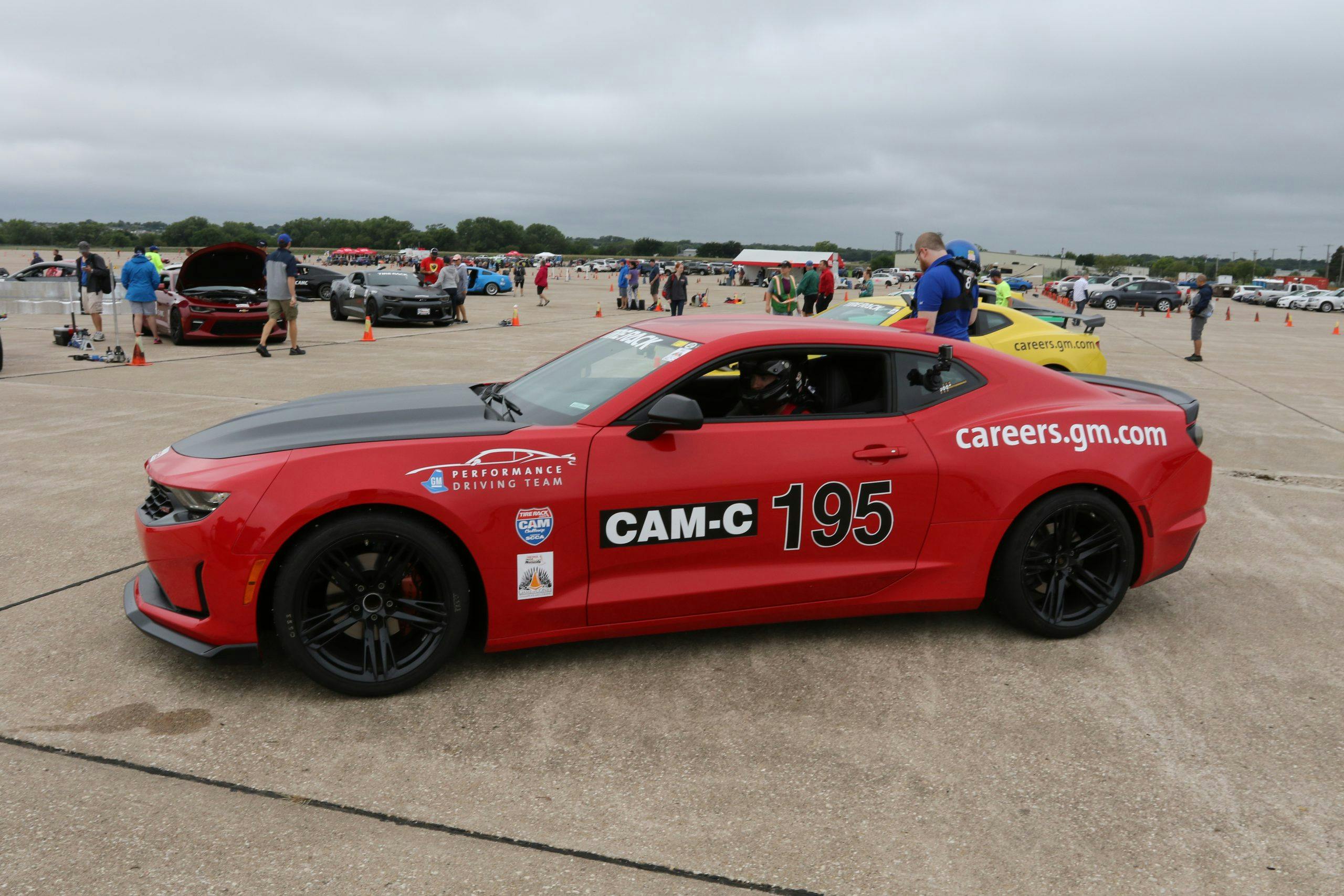
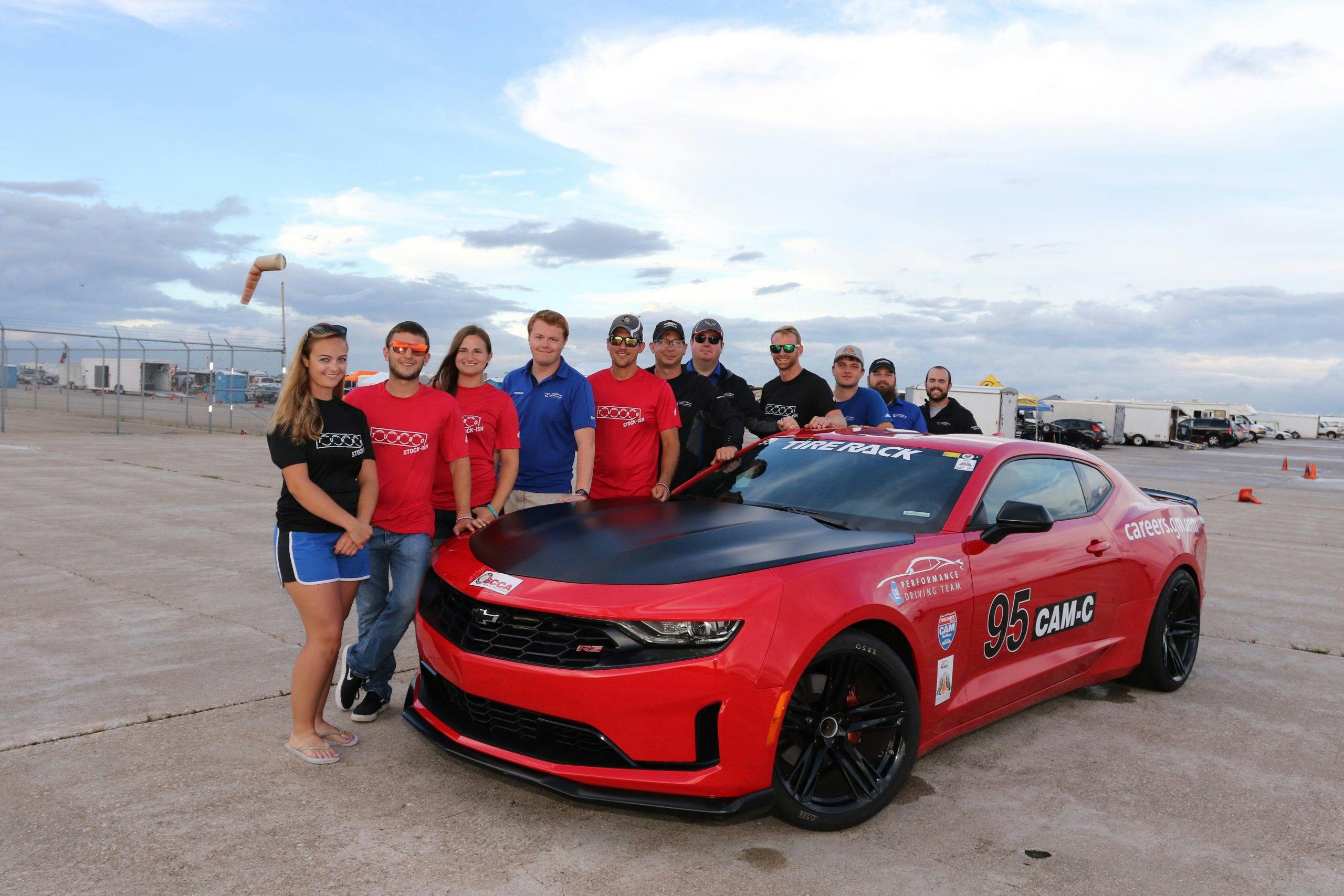
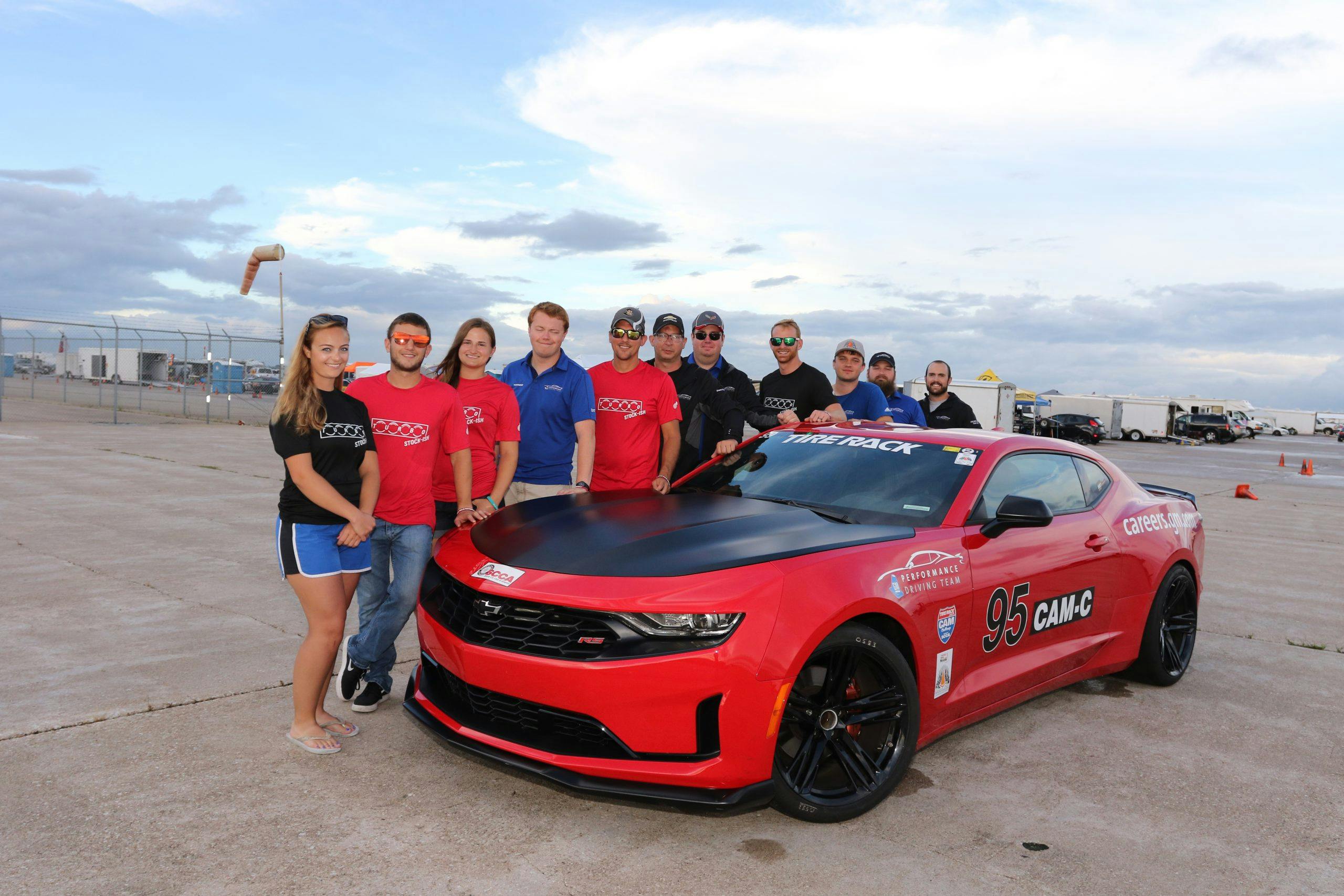
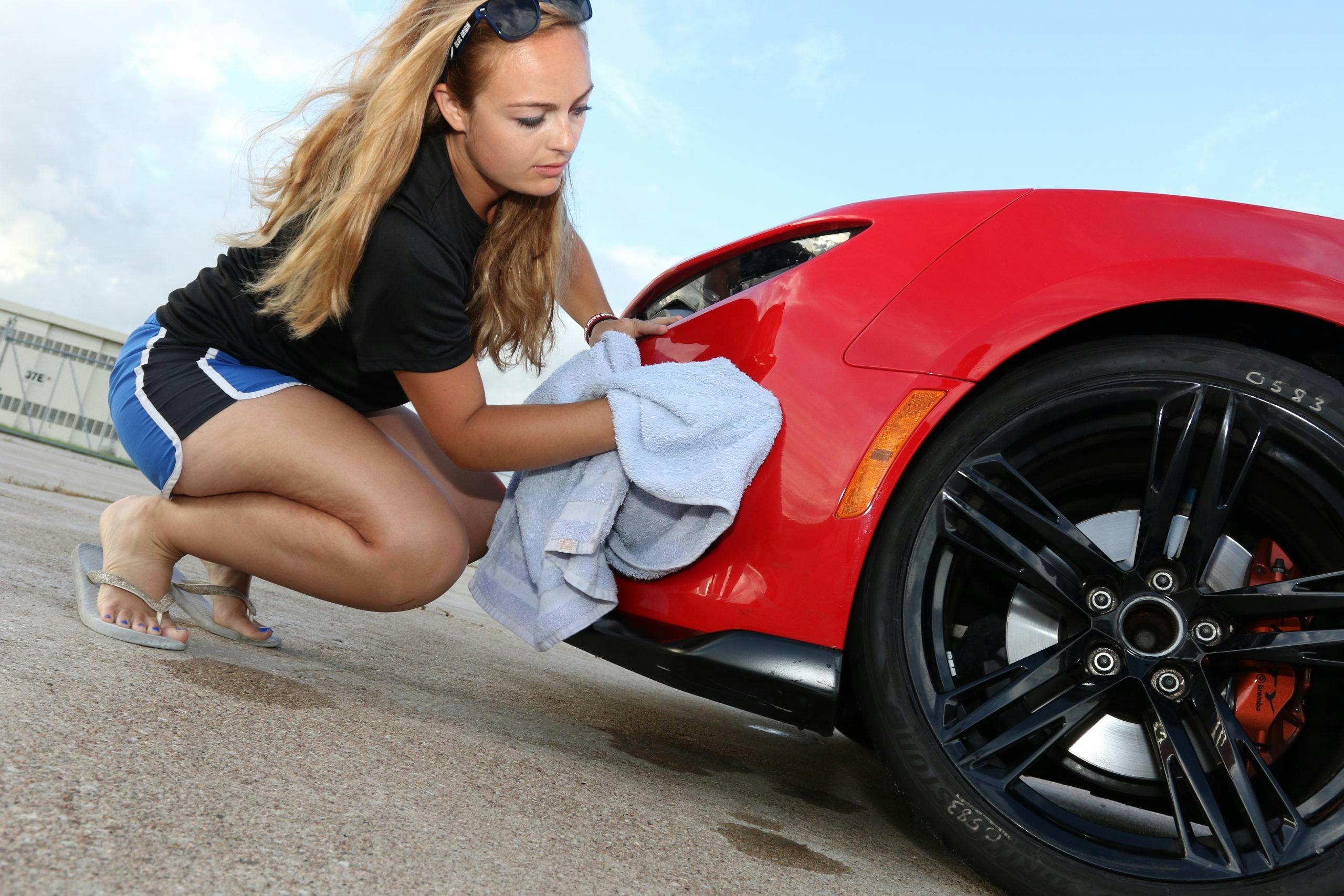








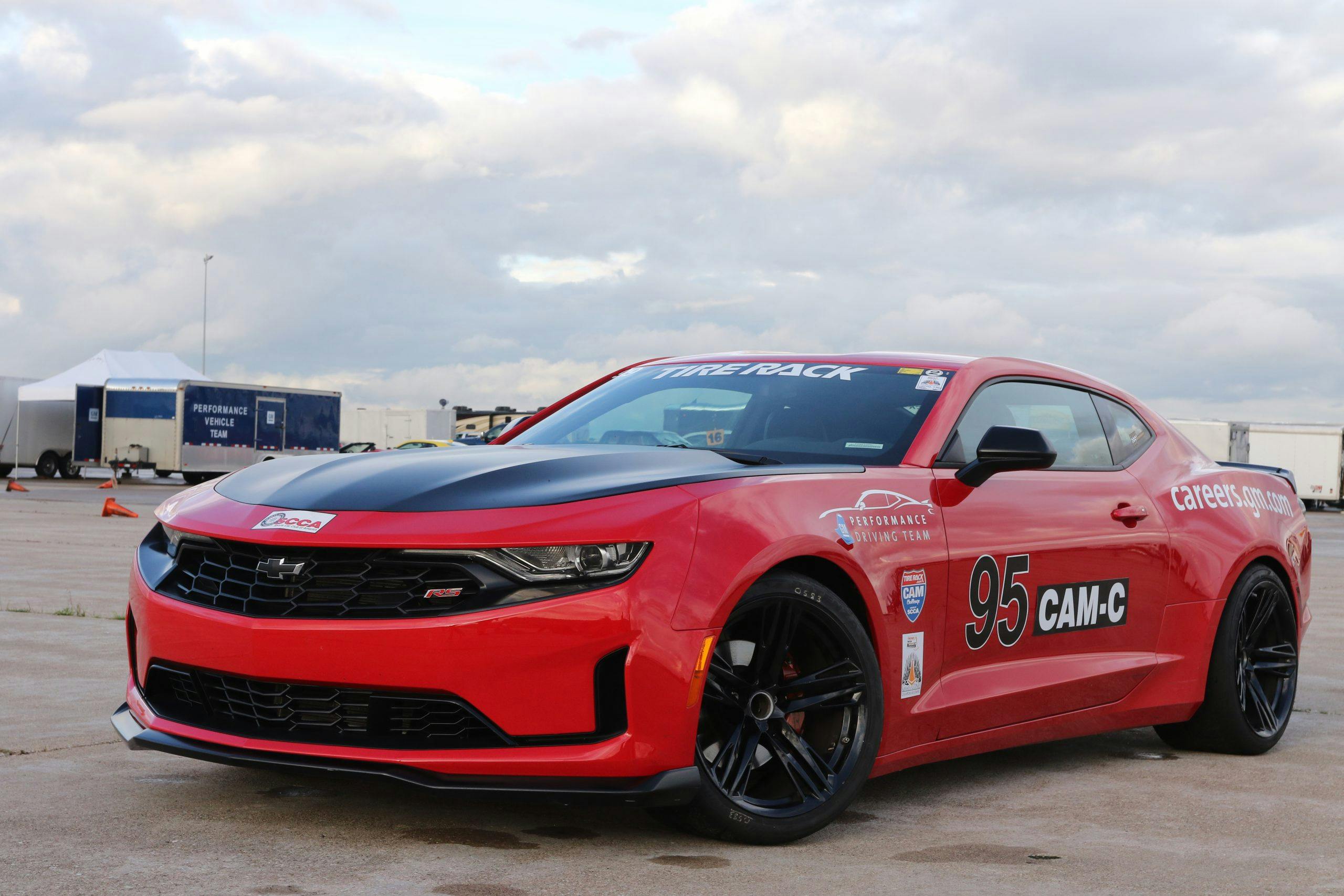








Sir,
I raced against your GM team, this past year. I drive an 18 Black ZL1 1LE and always look forward to competing with them at the Toledo Express Airport venue. The NWOR had the final Event at Owens Community college this past weekend, the 16th. I did take the Podium with a 1st place but with only 3 folks Racing it was just more seat time for me.
That evening I left my Dads place after dinner and headed home, feeling pretty good about the day. I didn’t get far, maybe 200 ft. and the Oil gauge dropped to zero! I shut her down and coasted to a stop. I waited, for a minute, fired it back up and she seemed fine. I went about a half mile, and she really let go, it sounded like Marbles in a grinder. I called Dad and we towed it to the dealership. They are so backed up they can’t get to her for a couple weeks!! Not good, but fortunately she goes in storage this week.
I guess I’m curious if your team would like to work on her as a Next Level of their education. I really don’t think it would be possible, but I had to ask. I am a Retired Mechanic and a Disabled Vet. I was a M1 Track Vehicle Mechanic, nasty sob.
I can only hope she will be covered under Warranty. She only has 24,300 miles on her.
Thank you, Sir, for the Competition and I will see them next year.
Howard Fry
Perrysburg Oh.